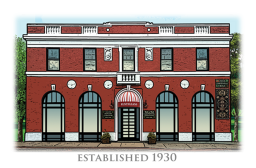1 Governor St, Providence RI 02906
News Flash: The Rug Business is Growing
I first attended the Atlanta Market in January 1985. The second floor was abuzz with excitement as importers – then almost exclusively from New York – crowded the temporary exhibition space in the Americanized version of a middle eastern bazaar. The corridors of floors four thru six were packed with buyers, shoulder to shoulder, seeking fashion forward trends in wall to wall carpet and machine made area rugs.
The world of rugs had been discovered by a growing population interested in keeping up with the Joneses and displaying their own entry into what was heretofore the rarified atmosphere of interior design and mass availability. The marketing genius of Norm Sweeters Sr. and Hilton Hodges of Pande Cameron had panned out. With vision, they placed their programed product – for YEARS- on the back cover of The New Yorker Magazine and developed a precision manufacturing and importation operation on the foundation of an exotic and esoteric old world craft.
For the next 15-16 years the beat went on. Firm after firm introduced lines of magnificent and diverse handmade carpets all scaled and stocked in sizes ranging from 2 x 3 to 12 x 18. Other innovators like Abid Alahi of Asmara reinterpreted classic Persian designs to match the palettes of modern fabrics and to be in sync with the Pantone Set. The newly constructed ORICA building in Secaucus was testament to the geometric growth of imported inventories and the dozen plus firms who occupied the original footprint were about to more than double as demand for cheaper warehouse space and rising rentals in NYC impelled a coterie of limited partners and Hartz to further develop the new building taking the space to a full 380,000 square feet.
Back in Atlanta, multi- year leases with carpet importers were bursting the seams of floors 3-6 of the Merchandise Mart which held at one point some 125 showrooms entirely devoted to the promotion and sale of handmade, oriental rugs from the Middle and Far East. The second floor of this same Mart was barely adequate to accommodate the demand for temporary exhibit space during the January market.
Then came the new millennium and with it a steady and relentless decline of the core of this centuries-old industry. What happened and why? Partly, people assumed that for every dollar they lowered the price, sales would go up by one dollar.
First, the industry dealt itself an efficient death blow by knocking itself off. Discontent with the long manufacturing lead time of necessity involved in the handmade world, importers sought other means of production to approximate the look of handmade to a new, expanded audience who could not tell the difference between tufted and knotted, polypropylene and wool.
Second, the introduction of these new goods into the market place disrupted, through expansion, the existing distribution channels. J C Penny, HomeGoods, Home Depot, Loews and every catalogue known to man now was in competition with the 3-5000 established retailers across the US. Pressure for cheaper pricing from the big box stores was eroding profits of the independent stores who were beginning to struggle to maintain market share. Simultaneously, the price of handmade goods at the manufacturing level were rising…bolstered by the sky-rocking albeit brief explosion of demand through the 1990’s. Inevitably, retail stores began to close and the children of importers turned their backs on the family business in search of adventures in software, real estate and law. ORICA was demolished and a diaspora became the leading attribute of the Oriental Rug Importing Industry.
Through the quiet chaos of the decline and fall of the oriental rug business three trends emerged.
- Smart followers of the Pande-Cameron model gravitated to Nepal (while a few stayed in India and Pakistan) where there was the possibility of maintaining the integrity of the handmade business and where the weaving style and the local culture allowed for a more efficient manufacturing cycle.
These firms were fashion forward, well capitalized and all about a thoughtfully mapped business model that ideally offered a robust level of inventory to a limited number of dealers. These firms maintain staff dedicated to excellent customer service and specialize in custom orders of every scale and to all appearances are flourishing.
- Old style dealers emerged – many recently new to the US - with an appealing but bizarre bazaar approach reflective of the good old days. One of a kind goods were idolized…. Mini “auctions” were held or created at all markets to stir the pot and create demand based on the fear that the best goods may have been snapped up in the frenzy. The MARKET was idolized….but the ultimate customer was lost somewhere in the shuffle of creating a singular, ever-changing “look” and vendors lost sight of the fact that moms and dads and kids and dogs live on what used to be a durable, dependable product when quality was the focus.
Many these traditional one of a kind dealers have moved to The Rug Show at Javits, offering literally that, one of a kind, once a year. As much as I LOVE the goods, inevitably come the quandaries inherent in this sort of merchandise We rug cleaners look on in horror as the latest and greatest “elixir” for altering the look of a rug made washing it a job for risk management. Want to find something similar to what you bought at market? Good luck….The fragility of this weak link in the chain of supply coupled with the lack of quality control makes for terra (non)firma for the established retailer. As established retailers, we know better than most the increased value of programed merchandise.
- Now come the “outsiders” the savvy observers who covet rugs for their beauty and for the value they add to a merchandising package. Recent headlines from several rug publications have focused on the many and diverse new suppliers of rugs to the design industry. Shows are the most obvious medium for display of goods and let’s not forget Atlanta. A current head count of the Atlanta Merchandise Mart reveals that there are fewer than 30 traditional firms plying the rug trade. However there are a full 120 firms in the building selling rugs.
At the recent High Point Furniture Market there were in excess of 120 firms selling rugs. Of that number only about 20 were representing what used to be the core of the Oriental Rug Industry and or members at large of the much more compact Oriental Rug Importer’s Association.
The long established, bold dealers who venture into Javits at the ICFF show (and other venues) deserve great praise for going it alone and forging forward; they are truly exploring uncharted territories in a brand new world. And they must, as any visible industry profile literally no longer exists.
That said, the fading self-advocacy of our own industry is being effectively countered. Handmade rugs are being discovered designed and produced by new and fresh eyes from firms in allied industries as evidenced by over 30 vendors of rugs (not rug vendors) at ICFF. It appears that the sum total of these following in the model of Pande-Cameron plus “rogue” operations have held up the import statistics bearing out the fact that demand is still there.
Now what do specialty retailers need to do to cope with yet another new reality.
Get the latest news, newest arrivals, and promotions!
Rustigian Rugs
One Governor Street, Providence, RI 02906
(Off-street parking in the rear of the building).
Call: 401-751-5100.
Hours:
Tuesday-Friday: 10am-5:30pm
Saturday : 10am-5:00pm
Closed Sunday & Monday
Copyright 2023 by V. George Rustigian Rugs



